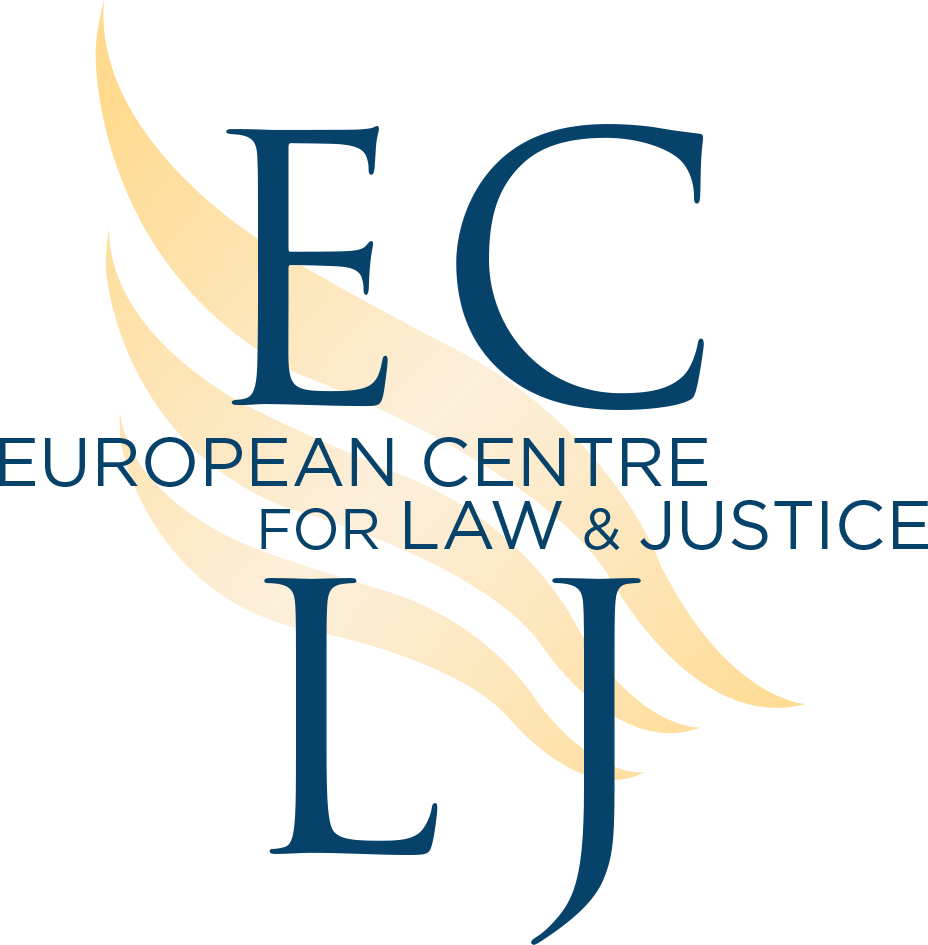

Accountability of Porn Platforms: MEPs Question the European Commission
EU: Accountability of Porn Platforms
“Will the Commission include Xvideos, Pornhub, Xnxx and Xhamster on the list of ‘very large online platforms’ under the Digital Services Act and, if so, when?” In the coming weeks, the European Commission will have to respond to this written question, submitted on 3 November 2023 by five MEPs, including François-Xavier Bellamy (EPP) from France and Margarita de la Pisa Carrión (ECR) from Spain.
Indeed, it is up to the European Commission to decide which sites should be granted the status of “very large online platform”, the condition being that they “have a number of average monthly active recipients of the service in the Union equal to or higher than 45 million” (article 33), which corresponds to 10% of the EU population. On 25 April 2023, the Commission designated an initial series of “very large online platforms”: Alibaba AliExpress, Amazon Store, Apple AppStore, Booking.com, Facebook, Google Play, Google Maps, Google Shopping, Instagram, LinkedIn, Pinterest, Snapchat, TikTok, Twitter, Wikipedia, YouTube and Zalando. But there is no trace of a pornographic site. As the MEPs put it in their written question, “it is surprising […] while the content of platforms such as Xvideos, Pornhub, Xnxx or xhamster, which are visited more often than some of those on the Commission’s list, often undermines people’s rights and dignity”. The statistics are clear: several pornographic sites are among the most visited in Europe and the rest of the world. According to Similarweb, Xvideos is ranked as the 11th most visited website in the world in October 2023, before Amazon.com (12) and TikTok.com (13). Pornhub and Xnxx come 14th and 15th, Xhamster 23rd, and Pinterest only 33rd. Other sites on the list of 17 ‘very large online platforms’ do not even appear, although it should be borne in mind that this is a global ranking, not a European one. So not only is it possible to include the most frequently visited pornographic sites in the list of “very large online platforms” under the Digital Services Act, but it is also essential, as it might be one of the most effective measures currently available to reduce the harm caused by this type of site.
The Digital Services Act, a potential tool for holding pornographic sites accountable
Adopted in October 2022, this Regulation aims to “[ensure] a safe and accountable online environment”[1] and to “put into practice the principle that what is illegal offline is illegal online”[2]. While access to pornography by minors is prohibited in the real world, this Regulation should logically provide greater protection for children against exposure to content of this nature, which constitutes a serious sexual abuse. More and more children are falling victim to it, at an increasingly early age and with serious psychological and behavioral consequences.
Generally speaking, activities linked to online pornography could be targeted using this Regulation. It should enable hosting companies and online platforms to remove illegal content quickly and on a massive scale. Obligations relating to the public identification of advertisers could curb the dissemination of advertising that generates significant revenue for platforms and is sometimes intended to redirect users to pornographic sites. The obligation to designate a legal representative in the European Union could, if not neutralise them, at least provide easier access to malicious actors hiding behind opaque structures or registered in states that guarantee anonymity to administrators. In the event of a breach of the Regulation, the penalties and obligations are not insignificant. It would also be possible for associations involved in the fight against pornography and meeting the necessary conditions to obtain the status of trusted flagger, which would enable them to receive preferential treatment for their reports.
Concerning in particular the provisions relating to the online protection of minors, Article 28 states in particular that “Providers of online platforms accessible to minors shall put in place appropriate and proportionate measures to ensure a high level of privacy, safety, and security of minors, on their service” (§1) but it also specifies that “Compliance with the obligations set out in this Article shall not oblige providers of online platforms to process additional personal data in order to assess whether the recipient of the service is a minor” (§3). In addition, if a platform is considered accessible to them, it “should take appropriate and proportionate measures to protect minors, for example by designing their online interfaces or parts thereof with the highest level of privacy, safety and security for minors by default where appropriate or adopting standards for protection of minors, or participating in codes of conduct for protecting minors”, although it is further specified that “this obligation should not incentivize providers of online platforms to collect the age of the recipient of the service prior to their use” (recital 71). Should this be seen as a form of reticence from the European legislator regarding the use of age verification to access certain sites? If so, this could be a problem in the case of pornographic sites, whose users are notoriously known not only to be adults.
The status of “very large online platform” is therefore of particular interest when it comes to protecting children from pornography. It entails additional obligations, including in terms of annual assessment of systemic risks associated with the services offered by the platform, particularly with regard to “the dissemination of illegal content”, “any actual or foreseeable negative effects for the exercise of fundamental rights, in particular […] respect for the rights of the child”, as well as « any actual or foreseeable negative effects in relation to gender-based violence, the protection of public health and minors and serious negative consequences to the person’s physical and mental well-being » (Article 34), i.e. several areas of particular importance when it comes to pornography. Consequently, “reasonable, proportionate and effective mitigation measures, tailored to the specific systemic risks” shall be put in place (Article 35), which may include “(j) taking targeted measures to protect the rights of the child, including age verification and parental control tools […]”.
Unanimous calls for porn sites to be subject to the obligations imposed on “very large online platforms”
As Frank Hersey, a legal journalist, recently revealed, in addition to this written question submitted by MEPs, the European Commission also received a letter signed by some thirty NGOs asking it to include pornographic platforms among the “very large online platforms” under the Digital Services Act.[3] Whether they come from political figures or civil society, the calls are unanimous. They also echo that of the Parliamentary Assembly of the Council of Europe which, in November 2021, invited the Member States to “ensure that regulations on online publishing, such as the European Union’s Digital Services Act, are applied to all media, including pornographic websites”[4].
The European Commission may respond to these calls imminently. Frank Hersey has received confirmation from the Commission that it is currently investigating several pornographic sites, including Xvideos, which claims an average of around 160 million monthly visitors in the EU between August 2022 and February 2023, with the aim of including them among the “very large online platforms”. According to the journalist, such a decision could be taken before the end of 2023[5].
The ECLJ welcomes this and notes that by submitting this written question to the European Commission, MEPs have followed one of the recommendations made both in its recent report entitled “Combating Pornography – Regulating Access to Pornography”, and during a conference held on 4 October 2023 at the European Parliament on “The Dangers of Children’s Exposure to Pornography”. Invited by Margarita de la Pisa Carrión (ECR), one of the signatories of the written question, the ECLJ had specifically recommended that MEPs approach the European Commission to draw its attention to the need to include large pornographic sites among the “very large online platforms” within the meaning of the Digital Services Act.
It is therefore to be hoped that the European Commission will proceed as quickly as possible with this inclusion, following the concordant voices of civil society and European elected representatives. By taking concrete action to make the internet safer for children, it will also show that the Digital Services Act is a functional and genuinely useful instrument for holding all types of online platforms accountable, particularly those that are likely to endanger the health and safety of Europe’s young people.
________
[1] For a presentation of this regulation, see: https://commission.europa.eu/strategy-and-policy/priorities-2019-2024/europe-fit-digital-age/digital-services-act_en
[2] « DSA : le règlement sur les services numériques vise une responsabilisation des plateformes », Vie publique, 5 juillet 2022 : https://www.vie-publique.fr/eclairage/285115-dsa-le-reglement-sur-les-services-numeriques-ou-digital-services-act#:~:text=Le%20futur%20r%C3%A8glement%20DSA%20(pour,europ%C3%A9en%20le%205%20juillet%202022 (our translation)
[3] Frank Hersey, “Adult websites look set to be designated as VLOPs as Xvideos self-declares”, MLex, 23 November 2023.
[4] PACE, Gender aspects and human rights implications of pornography, Resolution 2412 (2021), 26 November 2021, 10.4.2.
[5] Frank Hersey, “Pornhub responds to Italian data protection case as delay in Cyprus leads to threats of legal action”, MLex, 23 November 2023.










